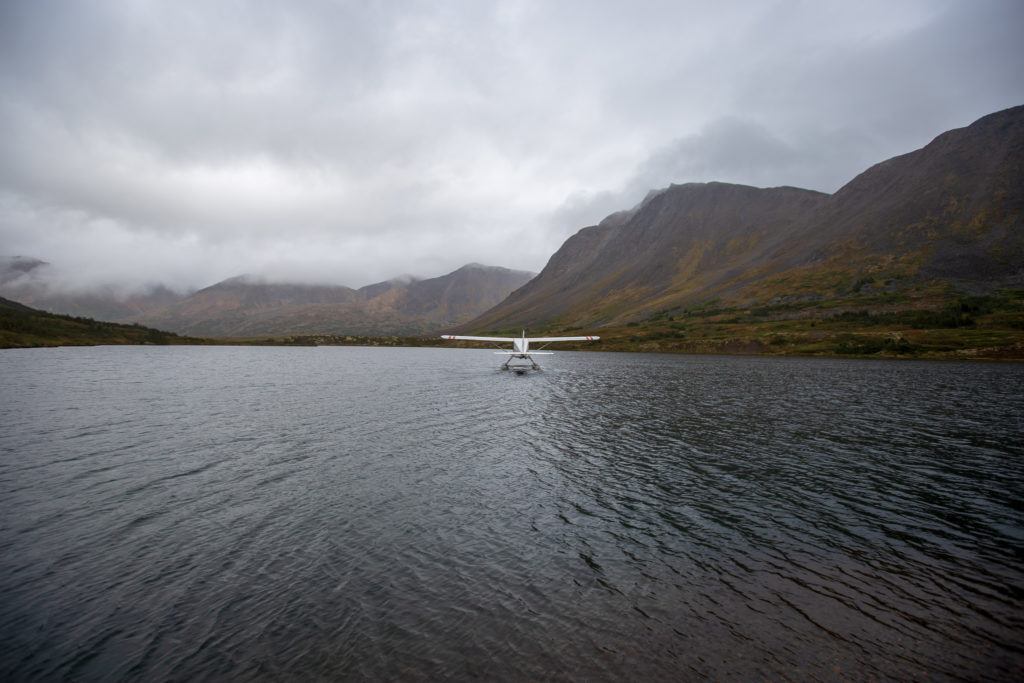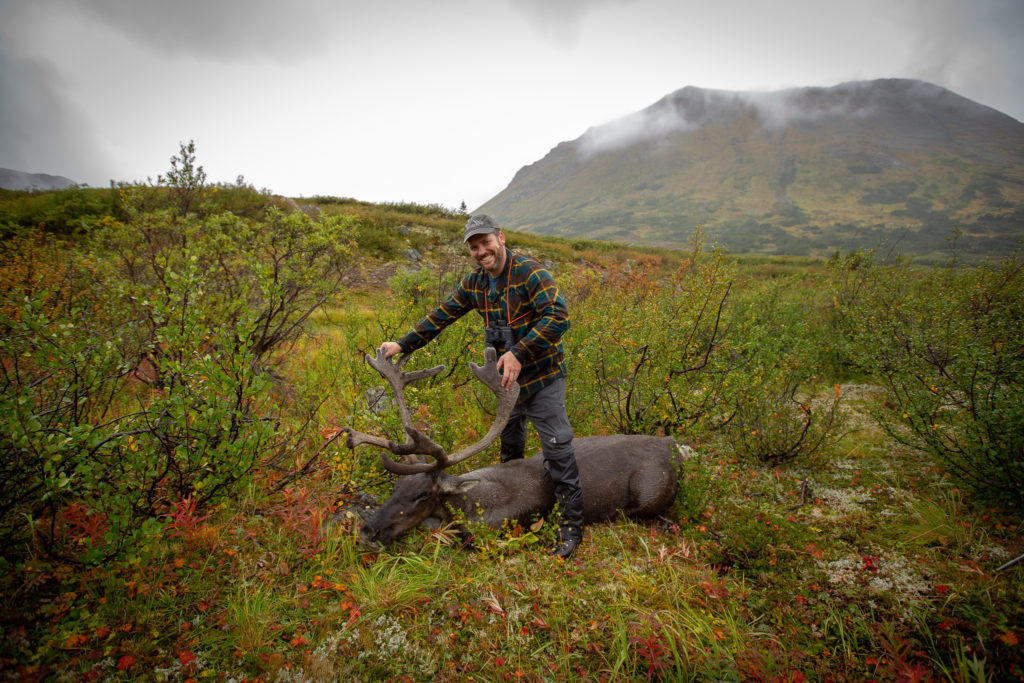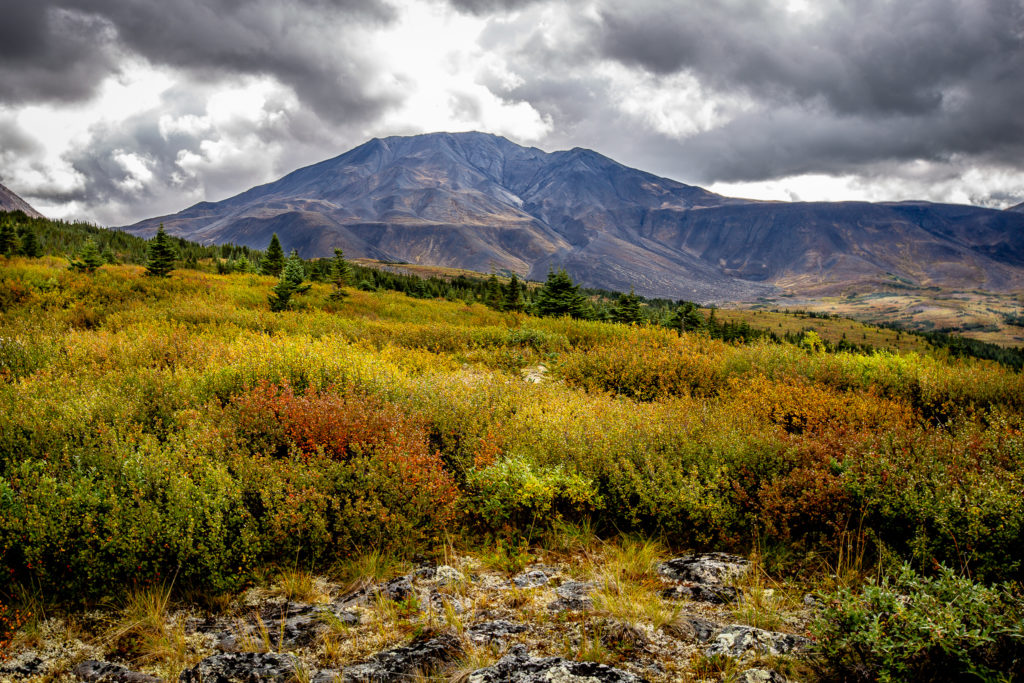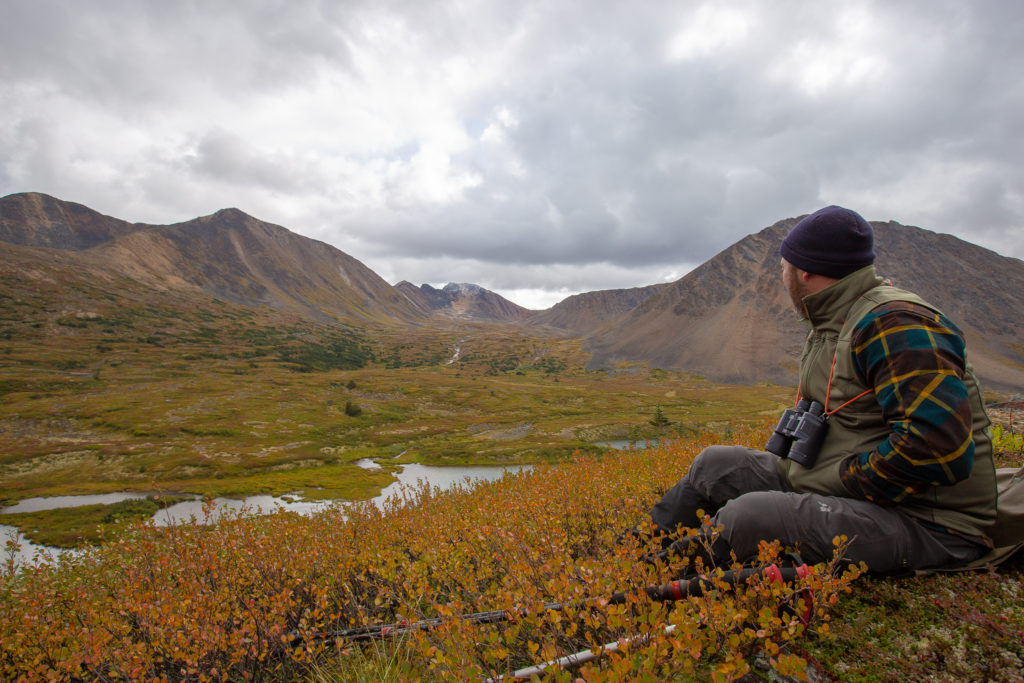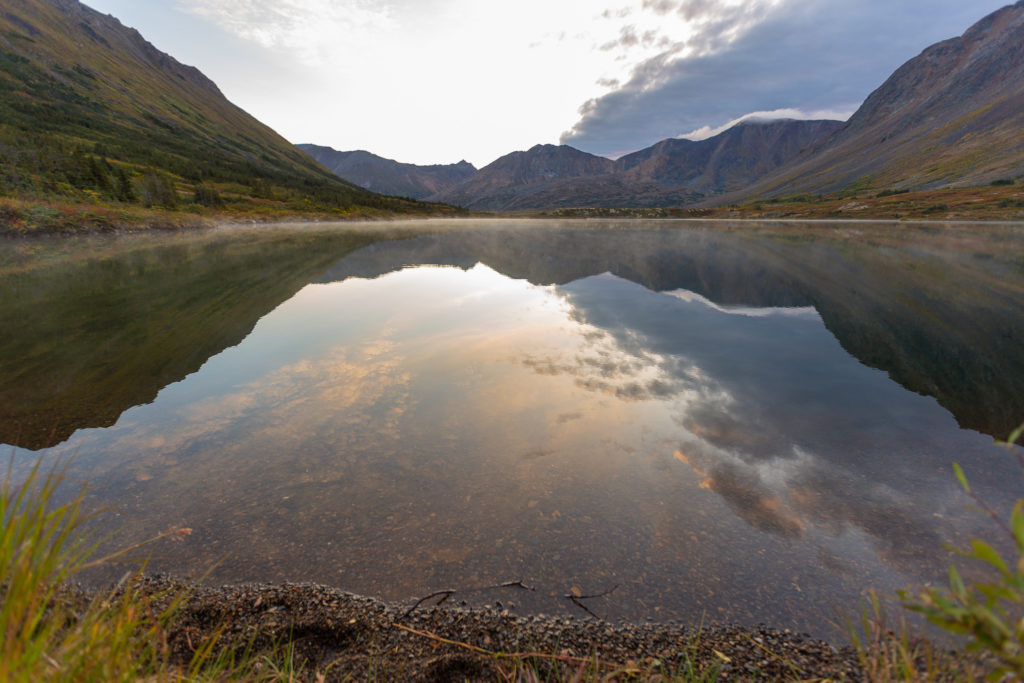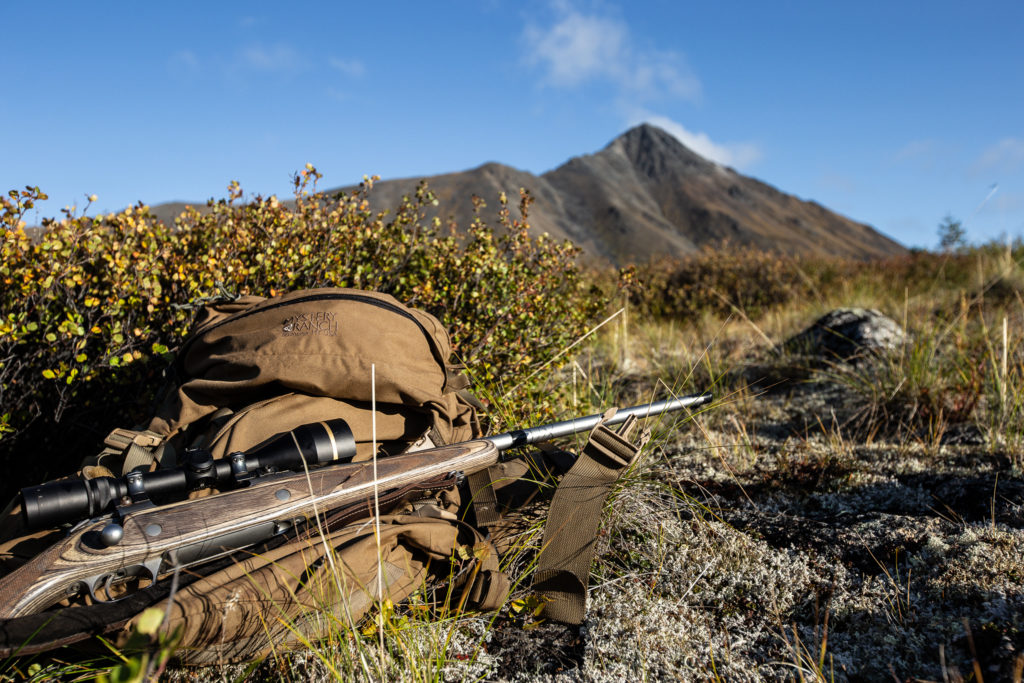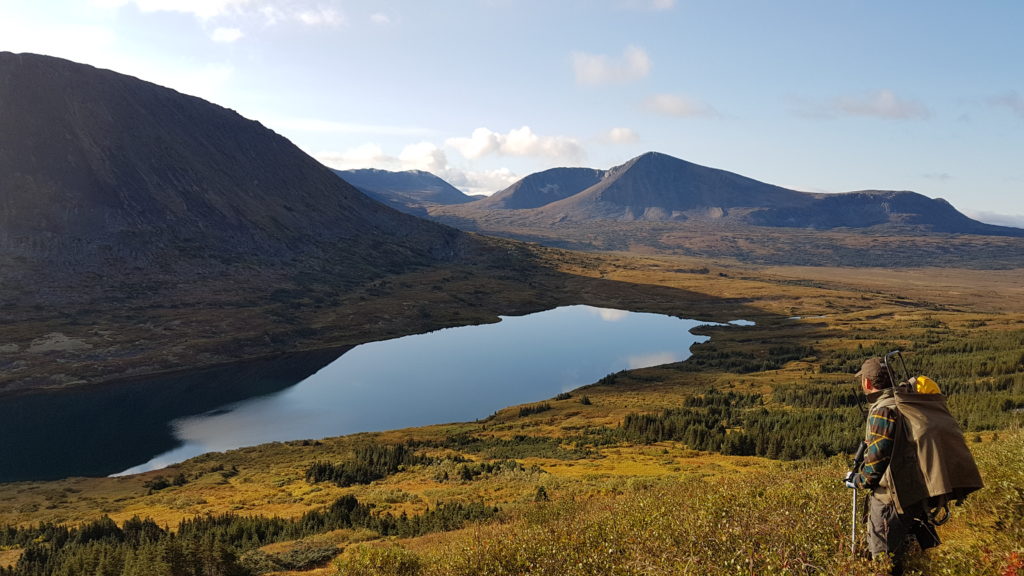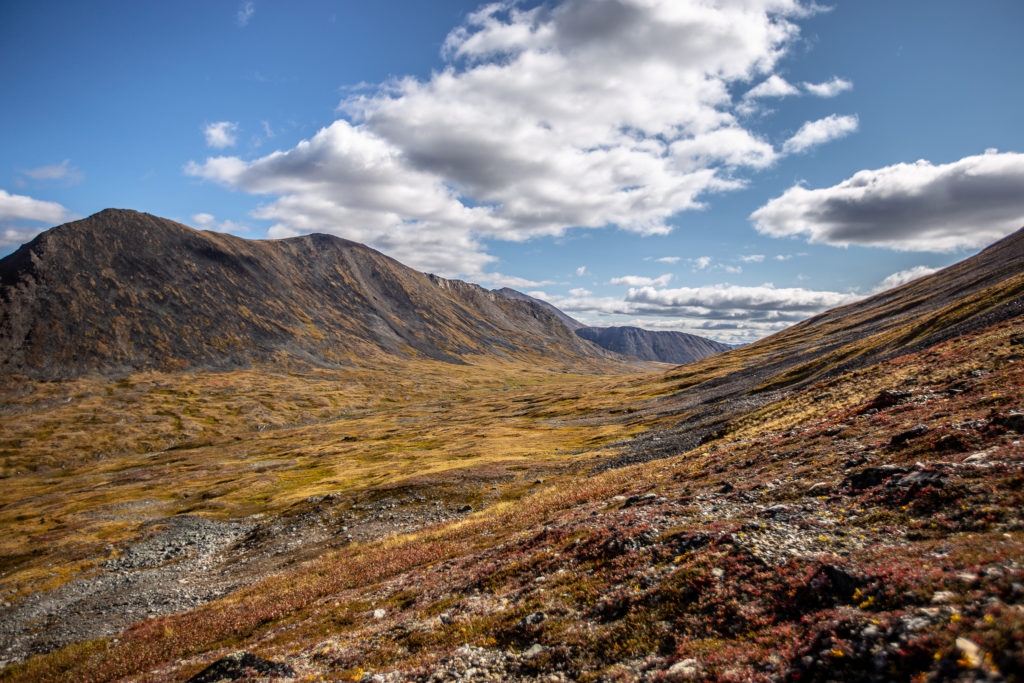In September of 2016, I went on my first hunting trip to northeast BC in search of moose and elk. As a lifelong BC resident and hunter, I have no valid explanation as to why it took me that long to venture North. Nevertheless, the story unfolded as it has for so many before me, I fell in love. A deeply primal feeling was ignited in me on that trip and I yearned to be back in the wild the moment I had left it. I returned the following year to a nearby area in search of sheep. The flame burned hotter still. I made plans for this year to see yet another far-off corner of the province, the Cassiar Mountains.
The Cassiars extend from the Yukon Territory southeast some 400 km into BC and for much of the range they form the continental divide between the Arctic and Pacific Ocean’s respective drainages. Mineral exploration has existed in the region for over 100 years mainly for gold, but also asbestos and jade. The company town of Cassiar was built in the early 50’s but was abandoned entirely in 1992 with the falling price of asbestos and the challenges of switching from open pit to underground production. The region is among the least populated in the province with the bustling hub of Dease Lake being one of the largest settlements.
It was to Dease Lake with it’s some 200 residents that Pat and I were headed for our flight into the wild. I broke up the 2000 km drive into three days on either end of the trip in part to pick up necessary camp equipment from my cabin, but more importantly to relish in the experience of the trip. Too often in the past, I have rushed to my destination and missed out along the way. The unnecessary pit stops all provided me with extra tidbits for the memory of this hunt.
We arrived at the float base late in the morning with the hope of flying to our chosen lake that day. Leading up to the trip we were unsure how the flights would unfold due to the smoke produced from the nearby Telegraph Creek fires. Smoke levels had been significant for the previous two weeks, but a recent shift in the weather gave us the visibility we needed and after stuffing the turbo beaver with our excessive amount of gear we were airborne for our forty-minute flight. The scenery changed quickly as we gained altitude with the dense boreal spruce forests of the valley giving way to immense willow plateaus and eventually to alpine tundra. It is unlike anywhere else in BC, and reminded me of my time working in the Northwest Territories and Nunavut a decade ago. I’m sure Pat had similar thoughts running through his head as it was in a remote mining camp in the far North that we first met.
No matter how much I look at Google Earth it never prepares me for the real setting. The mountains are always taller and steeper, the vegetation always thicker and more colourful. Flying into “our” lake was no exception and despite the dreary weather which the north country is famous for, we were in awe of our spectacular surroundings. It was exactly what we were hoping for. Unloading the plane didn’t take long and we had the wall tent and the rest of camp set up within an hour of the plane leaving. In British Columbia it is unlawful to hunt within six hours of being airborne in an aircraft other than a regularly scheduled commercial aircraft, so we had nothing but time on our hands for the remainder of the day. We glassed from camp, cracked a couple of beers, and Pat whipped up an excellent dinner as we discussed the plan of attack for the following morning.
We had ten days ahead of us and decided to head to the eastern end of the lake, casually glassing as we went. We were in no rush as there could be game anywhere. We were each packing Caribou, Moose, and Sheep tags while Pat also had a goat tag. I must admit, I felt the sting of not having a Grizzly tag due to the provincial ban from last year. The area has a robust population and it was simply a matter of time before we would cross paths. The focus of our trip was for meat as we both had young families at home to provide for. Going into the trip I knew that Pat was eager to shoot a caribou and that we each had LEH moose draws to look forward to in October. I felt the least amount of pressure to pull the trigger as I ever have on a hunt; I can only hope to go into future hunts with the same feeling as I believe it positively impacted my hunting experience on this trip.
As we crossed the valley at the eastern edge of the lake, I glanced up the mountain and instantly froze in my tracks. There were sheep 400 yards above us and they already had us pinned. My adrenaline spiked as this was not expected within the first hour of the hunt. We hastily glassed the sheep which turned out to be a group of ewes and lambs. I set up the spotter and PhoneSkope to take pictures and videos. We were both able to enjoy the sheep on the screen of my phone, one of the many perks modern technology has given us while in the field. After ten minutes we packed up and continued our way towards a small rise that would offer us a fantastic vantage point to set up and look down the valley. Once we were there, we got to work picking our surroundings apart. I noticed that the sheep had followed us along the mountainside and were feeding down into a large slide. Unable to help myself, I started taking pictures again while Pat remained focused on the hunt.
It didn’t take long for him to turn up a bull caribou a little over a kilometre away from us. It was too far to determine if he was legal or not yet, but we knew he was close and decided to cut the distance for further inspection. We left our backpacks, opting for a fast, lightweight stalk instead. I have done this in the past and still hadn’t learned my lesson, take your pack with you unless it is the final approach! We covered about 600 yards but could not find the bull. We glassed for ten minutes and just as we were about to head back, he showed himself again. Had I brought the spotter we would have known right away whether to continue our stalk. Still not knowing the bull’s legality we closed in some more, catching each other’s movements simultaneously at about 200 yards. All three of us froze and analyzed each other before the bull continued moving out of sight. Now we really had to move as caribou can cover some serious ground at what appears to be a completely casual pace. If he got ahead of us, the stalk was over. Pat and I crested a small knob and I checked down the far side where I expected the bull to be. Pat spotted him straight ahead of us at about seventy yards — staring at us with curiosity. When he turned his head, I was able to count six points on his right side, he was legal! Pat shot a moment later hitting a touch back from where he wanted, the bull trotted down to our right as the bullet splashed into the pond behind him a second or so after the shot. Pat followed up with a perfect quartering away shot that dropped the bull in his tracks.
We went into this hunt expecting success but didn’t figure on it coming so soon. I know Pat was absolutely thrilled as this was his first big game animal and I was on equally high spirits as I find there is something special in being there for those moments in another person’s life. After taking some photos we made the two-kilometer round trip to our bags and back. I cursed myself the entire way but could only really be so mad given the circumstances. We quickly broke the caribou down while constantly keeping a lookout for bears and then packed him in a single trip to the nearest pond. With Pat having bad knees we decided to make a cache and headed for camp where we had a small inflatable boat. By small I mean it was better suited for a single occupant instead of two dudes and a caribou, but we made it work. It certainly took longer to do things this way, but it was easier than crashing through waist-high brush with hundred plus pound packs. Five hours, ten portages and with light fading fast we hung the bull on a much-too-short meat pole across the lake from camp and paddled to our temporary home. Bears were on both of our minds at this point as we had nine more days before we would be flying out. There was no way to protect our meat any better than we had, the trees just weren’t tall enough. The only comfort was that at least it wasn’t hanging right in camp.
I failed to mention that it was raining on us the entire day and by the time we were back in camp we looked and felt like we had jumped in the lake. Everything was saturated with water. We had opted not to bring a stove for the wall tent as there was a fire ban on when we flew in and while that was the right call, I would have given anything for a fire that evening. The next morning the weather slowly changed with the clouds eventually dispersing and giving us a chance to dry out. We glassed from camp for the most part and relived the previous day’s adventure over and over. With a few good meals and beverages in us, we were ready to get back at it the next day.
At first light, we hopped back into our mighty yacht and paddled for the western shore of the lake which had a breathtaking view of the sprawling Kawdy Plateau. The biggest problem we had here was that there was so much to glass it was hard to keep focus and do it effectively. I found myself constantly getting side-tracked and looking at things that were well out of practical reach for us. I spotted a group of four bull moose about eight kilometres away and wished we had horses. After a couple of hours, we decided to climb the nearest mountain for a change of scenery. We set up in the highest clump of trees and got back to work, eventually turning up a small bull moose. It was a tough decision, but we decided against putting a stalk on him due to his distance from the lake. We enjoyed his oblivious company for an hour or so before making our way slowly back to the boat.
The weather the following day did not look too promising, but I was eager to climb the mountain behind camp and check out what appeared to be a very caribou(y) looking pass. We made the climb in short order and were greeted with freezing rain and snow flying sideways straight at us. It was perfectly calm in camp below, but up there the weather was a little more mountainous. We found some shelter behind a rock outcrop and hunkered down in hopes that the storm would pass. It soon became apparent that it was just getting worse, so we packed up and headed back down. Weather days are going to happen when in the mountains, but we were in good spirits. We had plenty of coffee and a wall tent after all. It snowed and rained for the remainder of the day and most of the night and I was thankful that Pat had brought a couple of books along.
The following day was far nicer to us and we decided to head back to the area where Pat shot his caribou. We quickly turned up another bull, but he was clearly not legal. We slowly worked our way through the area mostly with our optics, but also with our feet and eventually set up Pat’s tent to ride out a brief rain squall. Within a few hundred yards of the caribou kill site, I spotted a sow Grizzly with triplets on the far hillside. She was running towards us initially before quickly retreating the way she had come. We knew it wasn’t us she had spotted, or more likely smelled, so we decided to also back out. Backtracking around the closest pond, we made our way to higher ground where we would hopefully get a better view of the caribou carcass. We couldn’t quite see it due to the dip it was in, but it didn’t take long to spot a wolverine lurking nearby. Pat then spotted another sow Grizzly with an almost fully-grown cub on the kill itself. There wasn’t much point in hunting this area with so many bears around, but we glassed a bit more before eventually retreating for camp again.
As the mist rose off the lake in the semi-darkness of morning, we slipped back into the boat and made our way once more for the plateau. We were treated to a fantastic show of the fog sliding back across the expanse of tundra. A cow and calf moose slowly made their way further from us — having likely caught our wind. We didn’t turn anything else up and so carried on with our routine of moving a bit and glassing until we ended back up on the mountainside to our south. While I was scanning the mountain for sheep Pat was glassing below. He spotted a caribou and I set up the spotter. He was huge, I could see right away that he was legal despite him being almost two kilometres away. He must have been bedded previously as he was in the middle of a wide expanse that we had both glassed for most of the morning.
We bombed down the mountain in record time in hopes of catching up with him as he slowly grazed. Eventually, we lost sight of him in a dip, but I knew he was only about 400 yards away. I had no choice, but to try and sneak in on him through the waist high willows and would hopefully end up with a sub-hundred-yard shot. I moved slowly knowing that I had a steady crosswind which would eliminate my ripe smell. When I finally spotted him, he was 250 yards away. I needed to find a rest and fast. There was a large boulder to my right and I raced for it. It kept growing as I approached and eventually found it to be about eight feet tall. I climbed up on it and got in the prone position while also ranging the bull. He was at 350 yards and moving away with every step. I just couldn’t get a solid rest despite my best efforts and eventually slid back off the rock hoping to take a shot from a standing rest. I ranged him one more time only to discover he was now almost 500 yards away. I was rock solid on him with my turret dialled, but I couldn’t bring myself to pull the trigger. I had never practiced at this distance and no matter how good I felt in the moment there was simply too much risk involved. I watched the bull walk out of my life with mixed emotions, disappointed in not getting the job done and satisfied with making the ethical choice. I’m not a professional scorer by any means, but I have seen enough pictures of big caribou to know that this guy was in that category. After any failed stalk I can’t help but replay it over and over, the only thing we could have done differently was to have Pat hang back with the bull still in sight and use hand signals to direct me. We had covered a lot of ground by this point in the day and had to start making our way back to the lake for the paddle back to camp before darkness fell once more.
We had a visitor in camp that evening, a porcupine who let me take a bunch of pictures of him. Now I thought he was pretty cool at this point, but by the next morning, I wanted to shoot him. He got into everything he possibly could throughout the night, despite our best efforts to scare him off. At one point I woke up to his movement a foot from my face on the outside of the tent. I gave him some choice words, which caused Pat to howl with laughter. He came back the following night as well, but thankfully on Pat’s side of the tent!
The following day we made our way to the previously stormy pass, but this time the weather was on our side. It was easily the warmest and driest day of the trip with the sun beating down on us for most of it. We discovered the remains of an old airplane crash site on the side of the mountain. A reminder that we are merely trespassers in the wilderness — anything can happen at any moment. We worked our way down the pass before settling down on a couple of rounded rocks to glass the valley before us. All we managed to find a was a lone cow caribou feeding high in the scrub brush of the opposing mountain. We changed our position a few times over the course of the day while we worked on our sunburns. I made a brief hike into a picturesque north facing bowl that screamed sheep to me but didn’t turn anything up besides older sheep sign and a small caribou shed. Regardless, it was another incredibly satisfying day in the mountains.
While we only had one more day before our flight back to reality, it didn’t matter. We spent that last day in camp, taking time to fish and to prepare for our scheduled plane ride the following morning. The meat never attracted the bears thankfully and it is fantastic table fare, ranking high on my list of preferred wild game.
As I gazed out the window on the cramped flight back my mind drifted over all that had transpired on the trip. I felt completely satisfied. I had got what I came for, time spent in the wild far away from the encroachment of human activity. In today’s fast-paced life it is far too easy to forget the other real world out there.


